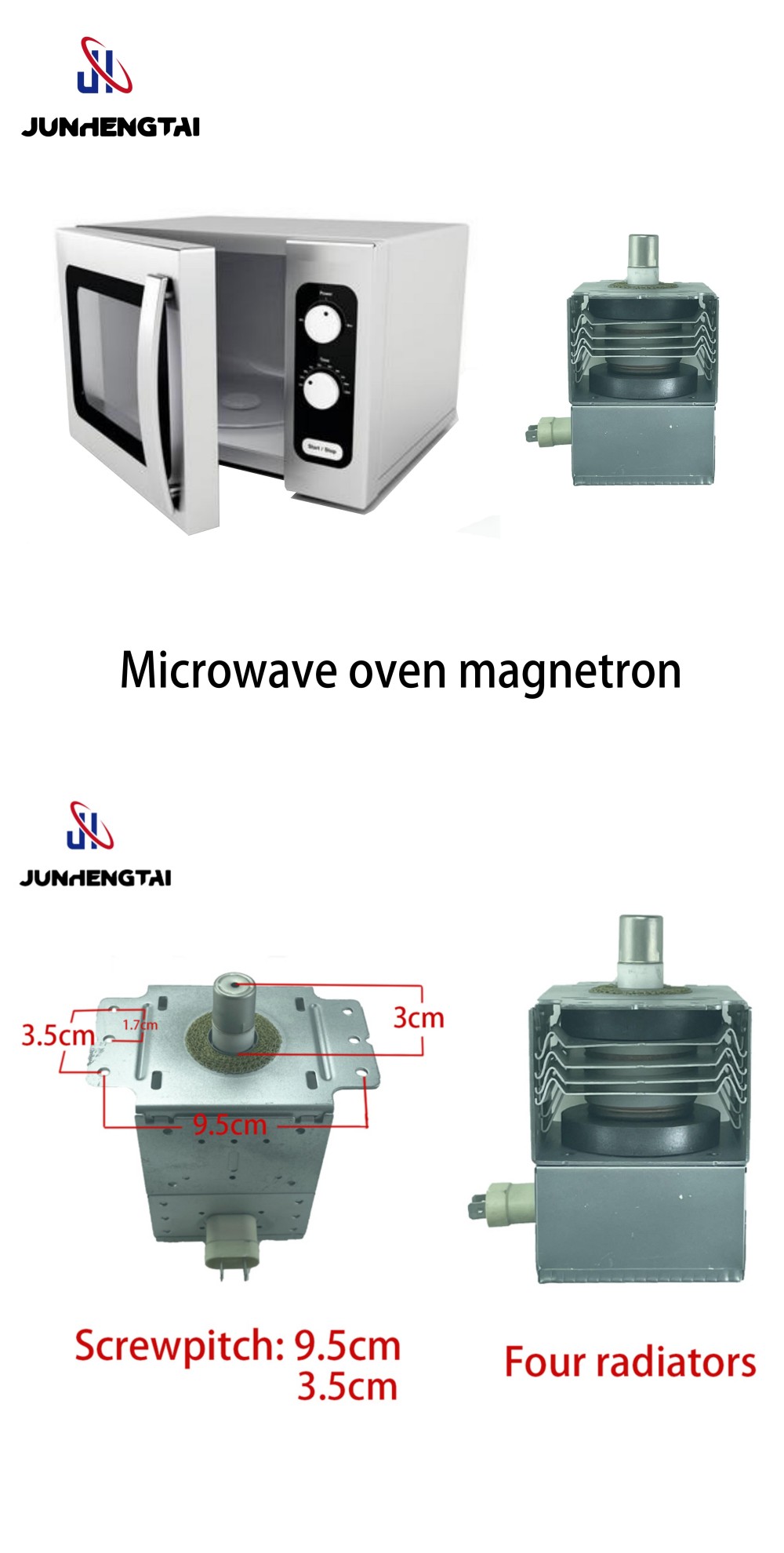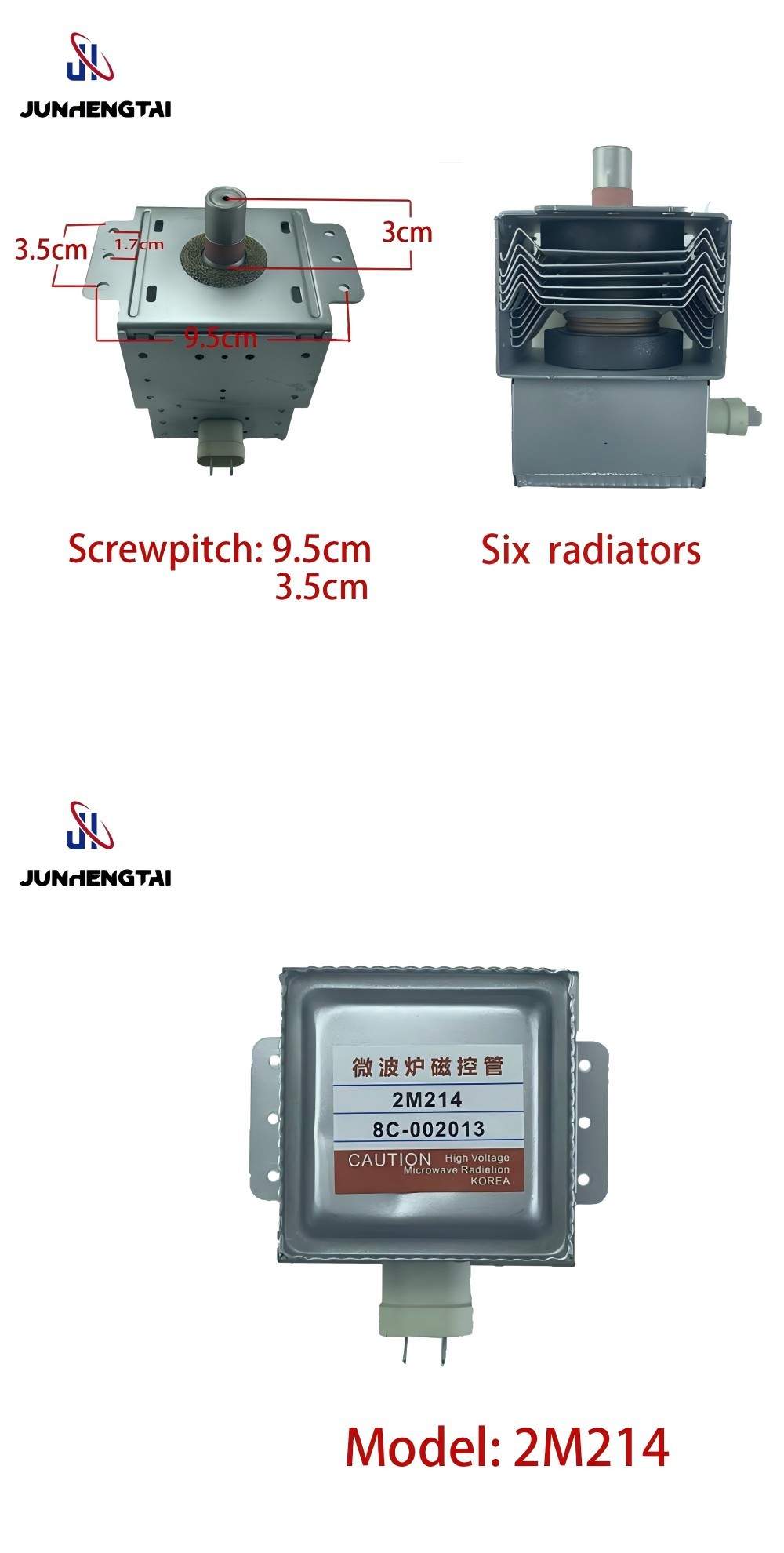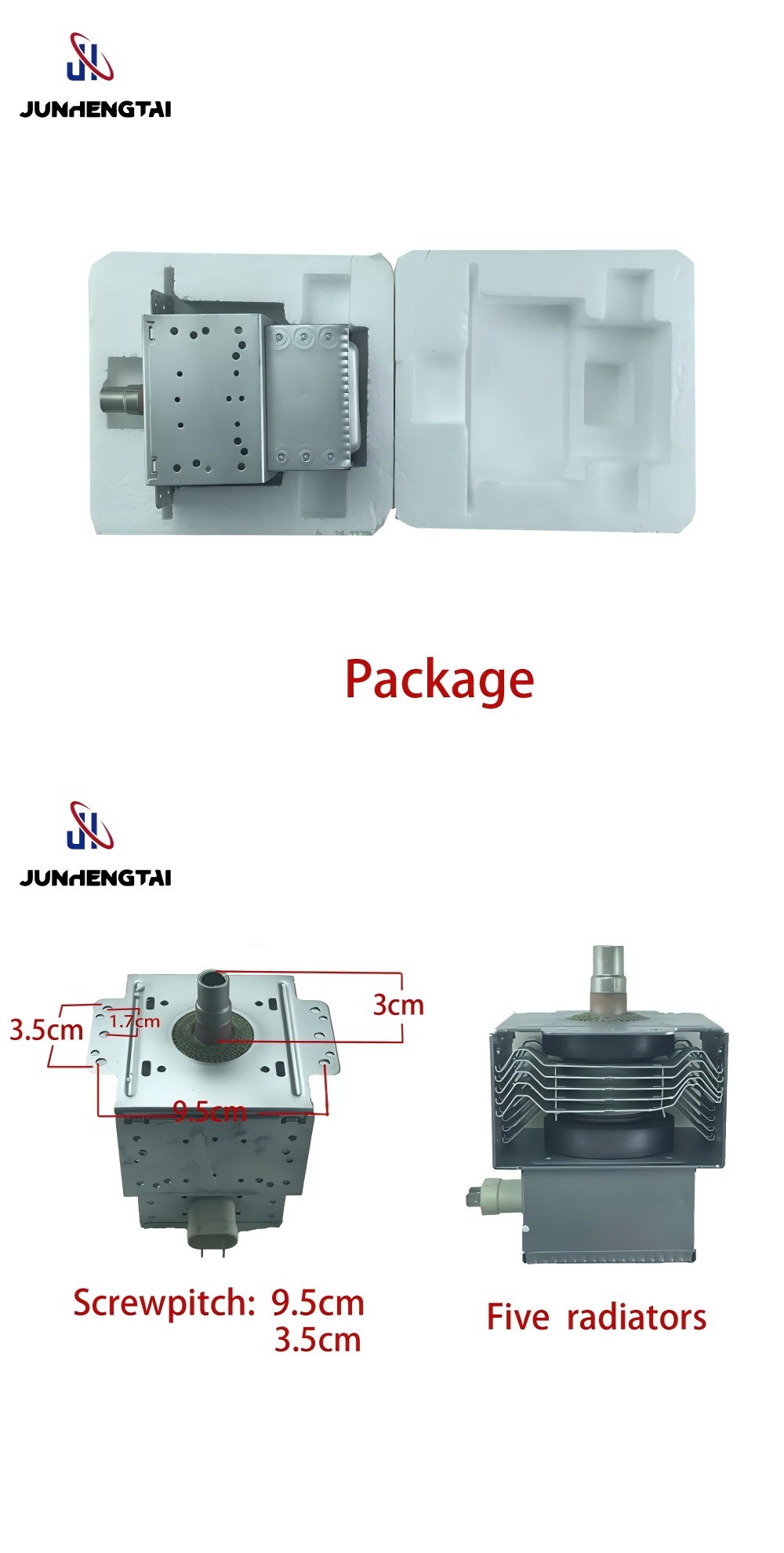Structure Composition
Cathode and Anode System
The core components of a magnetron are the cathode and anode. The cathode is typically a hot cathode, which emits electrons when heated. These electrons are accelerated by the electric field between the cathode and anode and start to move. The anode is a complex structure with multiple resonant cavities. These cavities are key areas for microwave energy generation, and their size and shape affect the frequency and power of the microwaves.
For example, in a common household microwave oven magnetron, the anode resonant cavities are precisely designed to generate a microwave frequency of around 2450 MHz. This frequency causes polar molecules such as water molecules to vibrate at high frequencies, thereby heating food.
Magnetic Field System
The magnetic field is an essential factor for the normal operation of the magnetron. The magnetic field is generated by permanent magnets or electromagnets. When the magnetron is working, the magnetic field direction is perpendicular to the direction of electron emission. The electrons move in a rotational motion under the influence of the magnetic field, which enables the interaction between electrons and the resonant cavities, thereby exciting the cavities to produce microwaves.
For example, in industrial high-power magnetrons, a strong magnetic field can precisely control the trajectory of electron motion, ensuring more efficient interaction between electrons and the resonant cavities. This results in the generation of high-power microwaves for industrial processes such as microwave heating and drying.
Working Principle
Electron Emission and Initial Motion
When the cathode is heated to a certain temperature, it begins to emit electrons. These electrons are accelerated by the electric field between the cathode and anode and move towards the anode. At the same time, due to the presence of the magnetic field, the electrons are deflected by the Lorentz force during their motion.
To understand this simply, imagine that electrons would move in a straight line in the electric field. However, the magnetic field acts as a “guide,” causing the electrons’ trajectory to bend into a spiral motion.
Microwave Generation Process
As electrons move between the anode resonant cavities, they continuously interact with the electromagnetic field of the cavities. The energy of the electrons’ motion is transferred to the cavities, causing the electromagnetic field energy inside the cavities to increase continuously, eventually forming a stable microwave oscillation.
The resonant cavities act like an “energy amplifier.” The energy of the electrons’ motion accumulates inside the cavities. When certain conditions are met, microwaves are generated and output from the output end of the magnetron (usually the waveguide connection). These microwaves are then used in various applications.
Application Fields
Home Appliances – Microwave Ovens
The magnetron is a key component of microwave ovens. It generates microwaves that can quickly heat food. The microwaves produced by the magnetron in a microwave oven typically have a frequency of 2450 MHz. This frequency of microwaves can effectively cause polar molecules such as water and fat molecules in food to vibrate at high frequencies. The friction between molecules generates heat, thereby achieving rapid heating.
For example, heating a cup of milk only takes a few minutes, and the milk can reach a suitable drinking temperature. Moreover, microwave ovens generally heat food relatively evenly, providing a convenient and fast way to meet people’s daily needs for heating food.
Industrial Applications
Microwave Heating and Drying: In industrial production, the microwaves generated by magnetrons can be used to heat and dry various materials. For example, in the wood processing industry, microwave drying of wood can significantly reduce drying time, improve production efficiency, and reduce deformation and cracking of wood during the drying process. For drying chemical raw materials, microwave heating can achieve rapid and uniform drying effects, improving product quality.
Microwave Communication: In early microwave communication systems, magnetrons also played a role. They could serve as microwave signal sources, and the microwave signals were transmitted to the receiving end through waveguides and other transmission devices to achieve long-distance communication. However, with the development of semiconductor technology and other fields, other types of microwave sources are now more commonly used in microwave communication.
Radar Systems
Magnetrons can also be used as microwave sources in some simple radar systems. They can generate high-power microwave pulses, which are emitted by antennas. When these pulses encounter target objects, they are reflected back. The radar receiving system detects the reflected microwave signals to determine the position, speed, and other information of the target objects.
For example, in some small-scale weather radar or short-range surveillance radar systems, magnetrons can provide sufficient microwave power to achieve target detection functions.
Post time: May-20-2025







